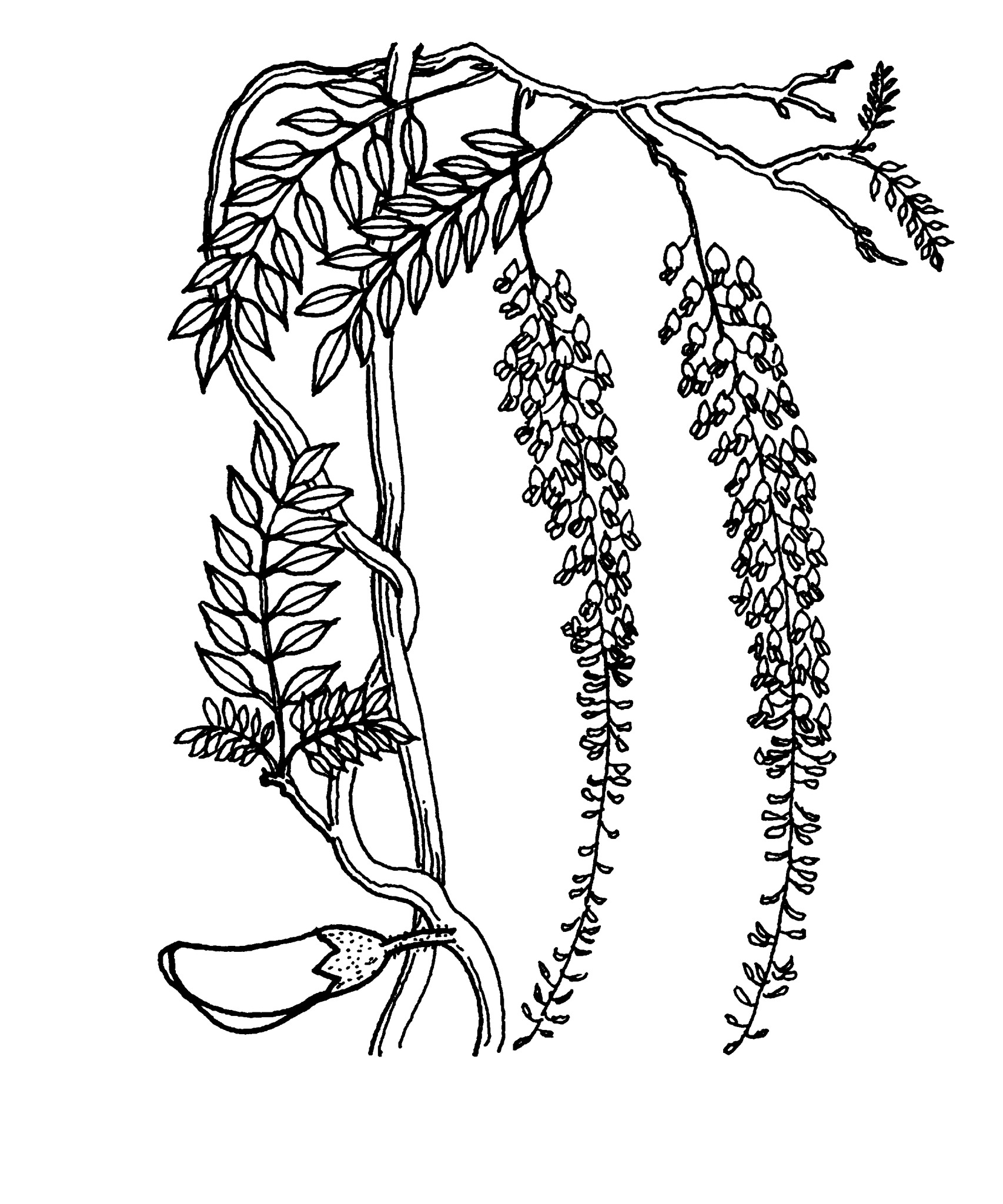
Woody climber twining clockwise. Leaflets 13-19, elliptic to lanceolate, narrowing towards the tip, hairless above, sometimes with a few hairs below, generally expanded at the time of flowering. Flowers pendulous, to well over 1m long in some cultivars. Flowers fragrant, opening sequentially from the base of the cluster to the tip, white, pink, violet or blue; spring to early summer. Fruit pod about 10-15 cm long and covered with a fine down.
As in other horticultural groups (notably camellias, maples and ornamental conifers), Japanese names that are used in a descriptive and general sense in Japan have confusingly been used in a strict sense for specific cultivars in the West.
Japan.
Source: (2002). Fabaceae. In: . Horticultural Flora of South-eastern Australia. Volume 3. Flowering plants. Dicotyledons. Part 2. The identification of garden and cultivated plants. University of New South Wales Press.

Wisteria floribunda 'Beni Fuji'
This name may be translated from the Japanese as 'Red Wisteria', a name of suspect application, and is possibly better referred to 'Honbeni'.
Flowers pale lilac-blue, in clusters (15)18-22(25) cm long. Leaves with (11)13-15 leaflets. Int. to Europe by the Japanese nurseryman Koichiro. Flowers early. ['Issai', 'Izuzu']
Leaflets broad, green when young. Flowers in narrow clusters about 25-35 cm long. Flowers pale blue. Standard pale blue with a greenish yellow blotch. Wings and keel bluish mauve, darker. Pods prolific, 10-25 cm long. Allegedly of Japanese origin but no longer available there.
Leaves bronze-green when young. Clusters mostly to 40 cm long, rarely to 45 cm, with a faint scent. Standards lavender-pink, darkest towards the sides and with a yellow blotch, wings and keel darker and purplish, reddish purple at their tips. Clusters to about 45 cm long. Pods to about 24 cm long. Bean refers to this cultivar (as 'Rosea') as having been grown since at least 1903, but this could apply to the paler 'Kuchibeni'. ['Beni Fuji', 'Rosea', 'Pink Ice', 'Honko']
See 'Domino'. It should be noted that the Japanese word issai, translated as 'early flowering', may have been used mistakenly as a true cultivar name.
Wisteria floribunda 'Kuchi-beni'
Young leaves pale green. Flowers early, clusters about 35-45 cm long. Standard pale mauve-pink.Wings and keel as standard but purple at their tips. Pods about 10-22 cm long. There is probably some colour variation within this clone and on individual plants. ['Carnea']
Wisteria floribunda 'Macrobotrys'
Flower clusters exceptionally long, with the individual flowers widely spaced along the stem. Leaflets 11-17, pale bronze when young. Flower clusters 0.5-1 m long, occasionally more. Flowers with the standard pale violet with a yellow blotch, wings and keel a darker tone. Pods 11-20 cm long. Many names have been given to exceptional plants with long flower clusters, but the length of the clusters may vary with the season and locality and it is uncertain whether they are distinct cultivars. Perhaps the best known of these is 'Multijuga' which was named by Louis van Houtte in 1873. Until such time as clear distinguishing descriptions are drawn up, this name is used in a broad sense to cover a host of possible variants. ['Longissima', 'Multijuga']
Wisteria floribunda 'Royal Purple'
Clusters 27-40 cm or more long, with a pronounced purple colouring. Calyx purple. Floral bracts pale mauve with a green edge. Flowers scented, the stalks purplish. Standard violet, about 2 cm wide, the wings and keel slightly darker. Early flowering. It is not certain whether this cultivar originated in Japan or the usa, int. to Europe c. 1937. ['Single Black Dragon']
Wisteria floribunda 'Shiro Noda'
Flowers white, sometimes tinged with lilac. An old Japanese cultivar probably dating back at least 400 years. Care should be taken not to mistake this for a selection of the cultivar 'Alba' in w. sinensis. ['Alba', 'Longissima Alba', 'Snow Showers']
Wisteria floribunda 'Violacea Plena'
Flowers double, lilac, forming rosettes due to the petal-like stamens. Japanese cultivar int. to the West in the 1860s. ['Double Black Dragon']